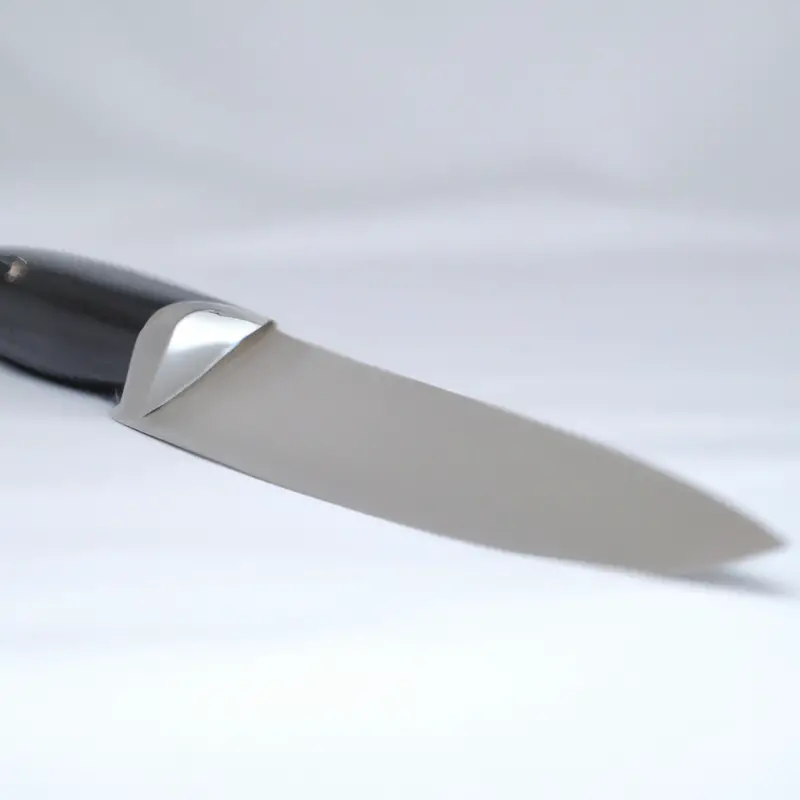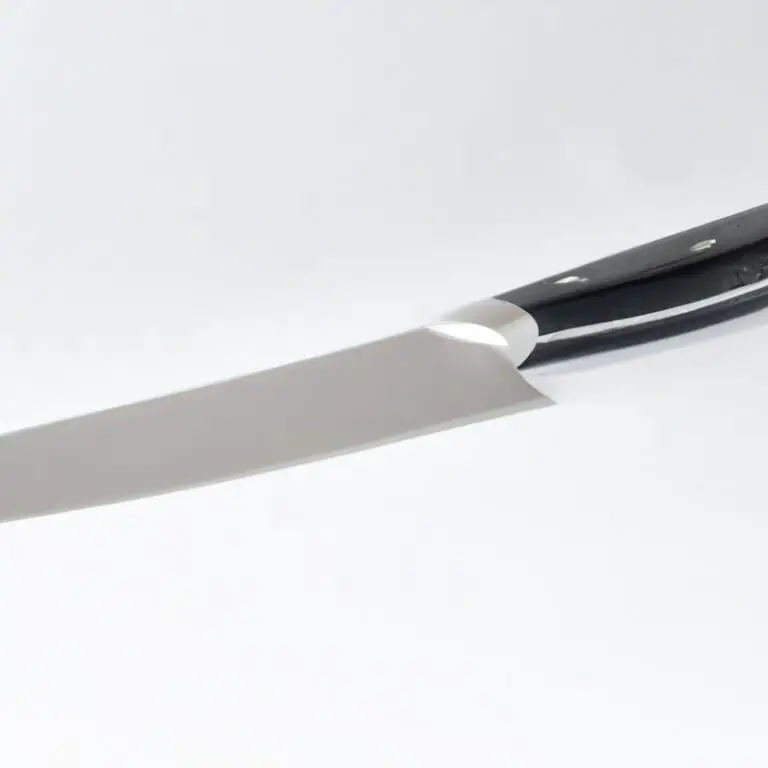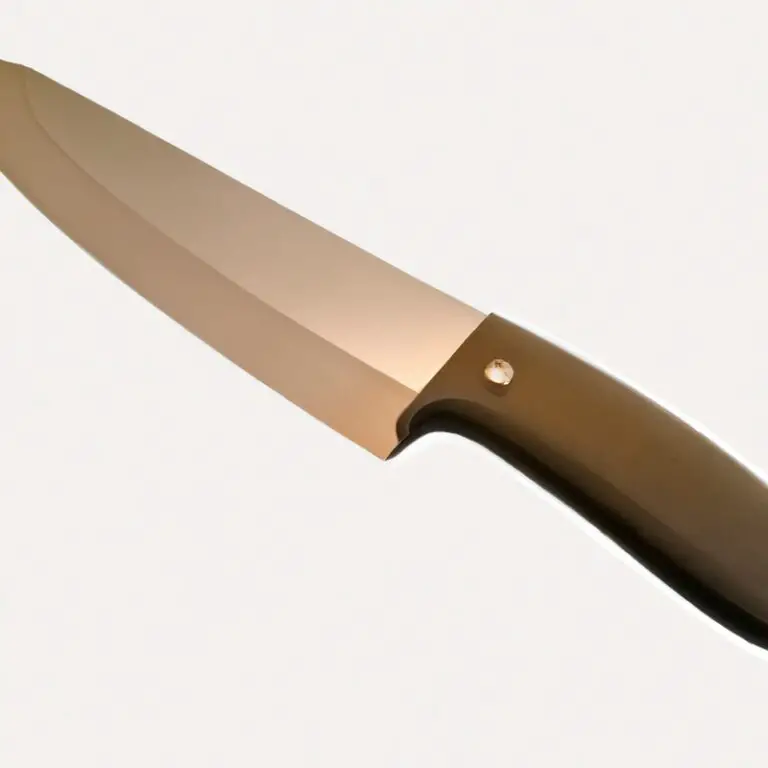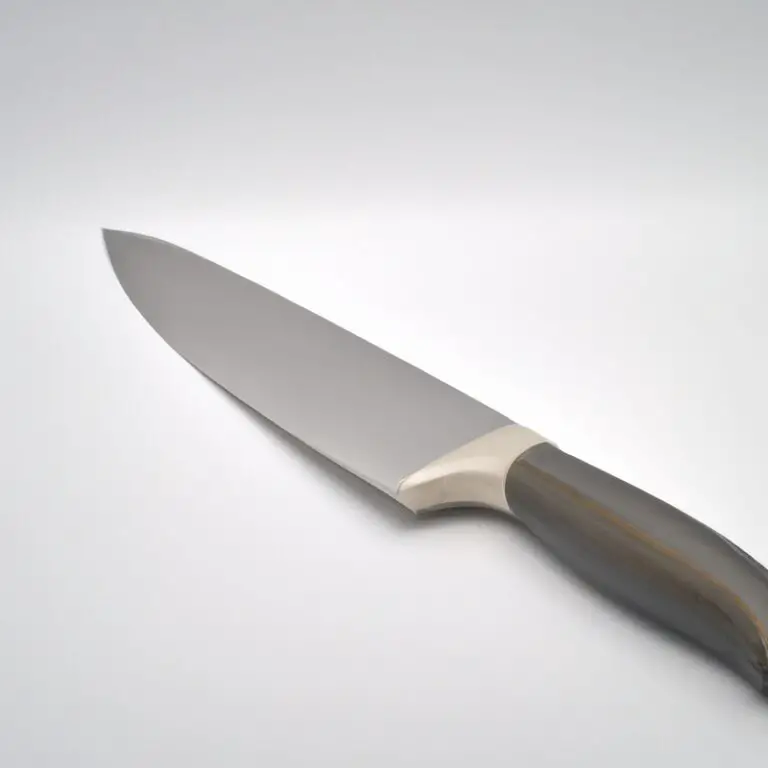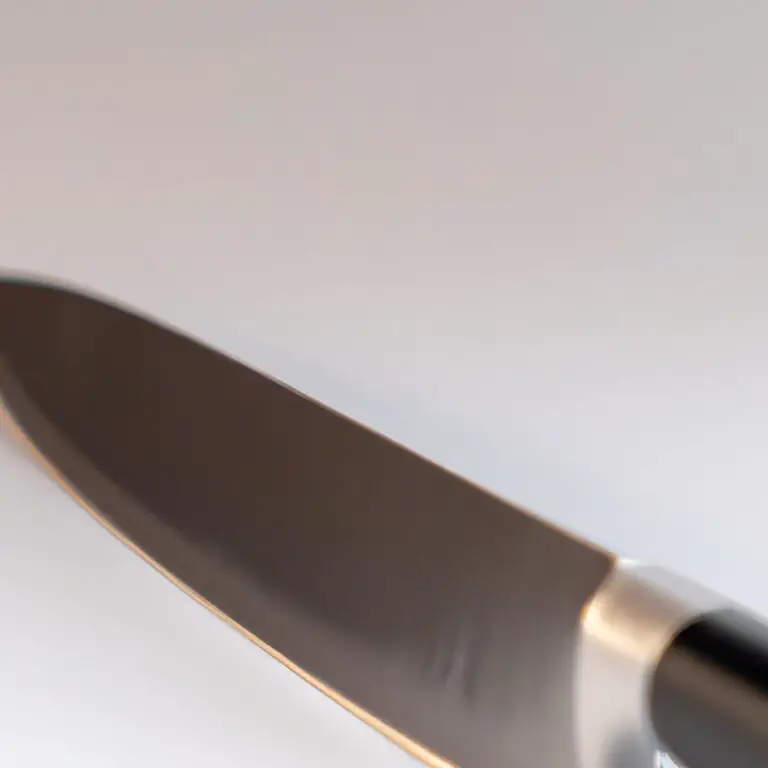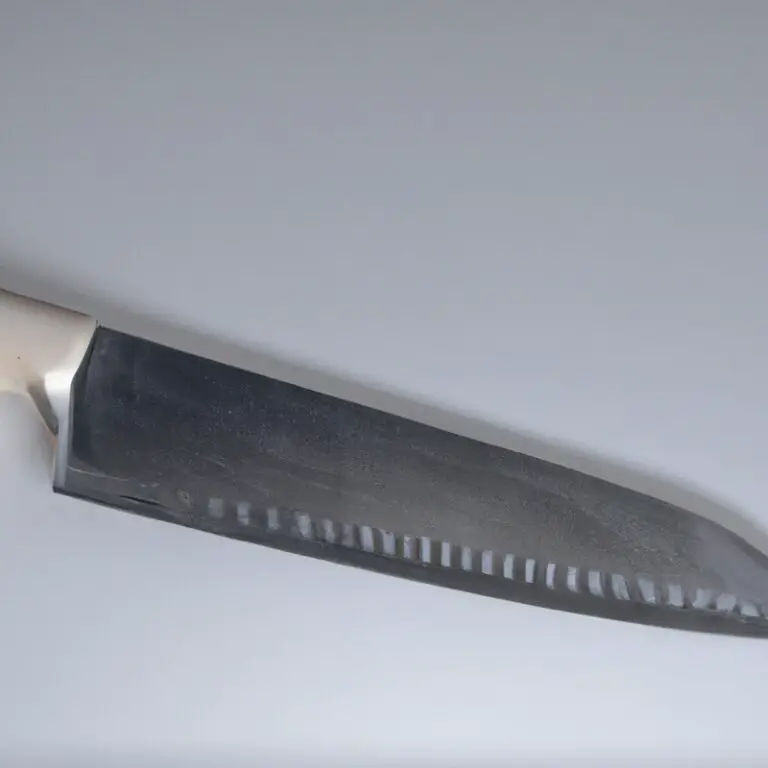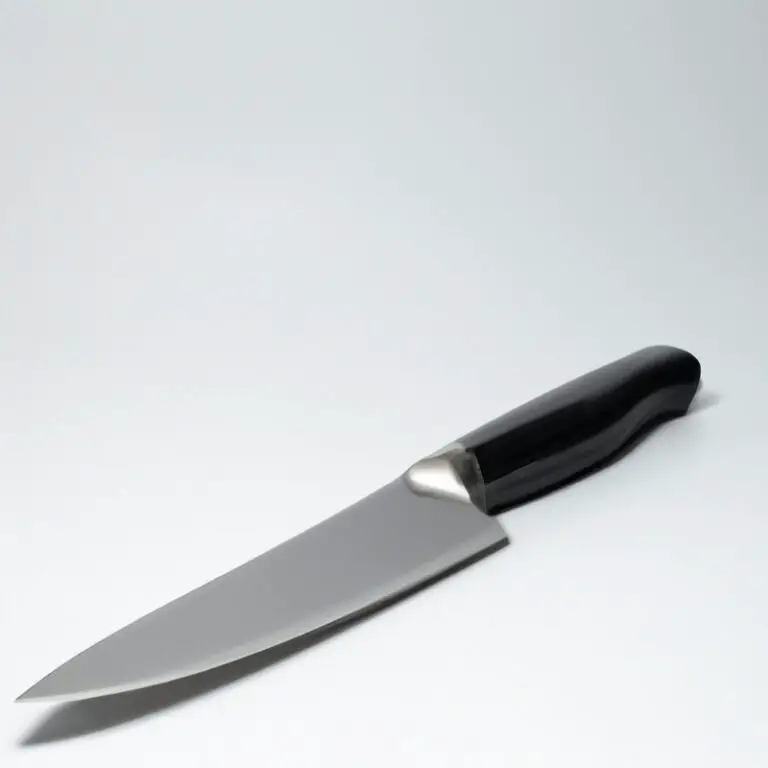How To Identify a Forged Chef Knife?
Key Takeaways:
- Look for inconsistencies in the blade and handle, such as uneven edges or loose fittings, which may indicate a forged chef knife.
- Pay attention to the weight and balance of the knife, as a forged knife will typically feel more substantial and well-made in your hand.
- Consider the reputation and expertise of the manufacturer or seller, as reputable brands are less likely to produce or sell fraudulent chef knives.
- If possible, inspect the knife in person or request detailed photos from the seller to ensure that it meets your expectations and appears authentic.
Imagine investing your hard-earned money in a shiny new chef knife, only to find out later that it’s a poorly forged, counterfeit imitation. Not only is it a waste of your money, but it can also be a dangerous kitchen tool.
As a cooking enthusiast, I understand the importance of owning a high-quality, genuine forged chef knife.
In this article, we’ll explore everything you need to know about identifying a forged chef knife. From understanding the basics to checking the weight and balance, we’ll cover all the necessary steps to ensure you are investing in a genuine, durable, and safe blade for your kitchen.
| Signs of a Forged Chef Knife |
|---|
| – Visible hammer marks on the blade |
| – Uneven and irregular edge |
| – Tang that does not extend through the handle |
| – A rough and unfinished handle |
| – Lack of sharpness and balance |
| – Inconsistencies in design and weight |
Understanding the basics of forged chef knives
Forged chef knives are made by heating and shaping a single piece of steel into a blade. The forging process creates a denser metal that is stronger and more durable than stamped knives.
This makes it a preferred choice among professional chefs and serious home cooks.
When inspecting a forged chef knife, look for a visible bolster, a thick piece of metal that separates the blade from the handle. This provides balance and enhances control while chopping and slicing.
Additionally, forged knives tend to have a heavier weight and an overall sturdier feel.
The high-quality steel used in forged knives provides better edge retention and resistance to corrosion, making it more efficient and long-lasting. The blade and handle should be seamlessly joined, with no visible welding marks.
Overall, understanding the basics of forged chef knives involves paying attention to the weight, balance, bolster, blade, handle, and steel quality.
By keeping these aspects in mind, you can identify a well-crafted forged chef knife that will serve you well in the kitchen for years to come.
Differences between forged and stamped chef knives
Forged chef knives are made by heating a solid block of steel and shaping it with a hammer and anvil to create the blade. This process increases the density and durability of the steel, resulting in a heavier, thicker blade that can withstand high impact and maintain edge sharpness for a longer time.
On the other hand, stamped chef knives are made by punching a blade shape out of a flat sheet of steel and grinding it into a sharp edge.
This method is faster and less labor-intensive than forging, making stamped knives less expensive but also less durable and less weighty than forged knives. In terms of performance, forged knives are better for heavy-duty chopping, slicing, and cutting tasks, while stamped knives are suitable for lighter and less demanding prep work.
Both types of knives have their pros and cons, so it ultimately depends on the individual preferences and needs of the user.
Signs of a poorly forged chef knife
Signs of a poorly forged chef knife include:
- Uneven weight distribution: When a knife is poorly forged, it may have an uneven distribution of weight, making it difficult to hold and use.
- Blunt edge: A poorly forged knife may have a dull edge, which may cause difficulty in cutting food.
- Cracks or chips: A poorly forged knife may have cracks or chips on its blade, which can cause it to break while in use.
- Loose handle: If the knife’s handle is not securely attached, it may become detached during use, making the knife dangerous to use.
- Inferior quality steel: Inferior quality steel used in a poorly forged chef knife can result in less sharpness and durability.
It’s essential to inspect a chef knife thoroughly before making a purchase to ensure it’s properly forged and meets your cooking needs.
How to check the weight and balance of a chef knife
To check the weight and balance of a chef knife, hold the knife by its handle and grip it firmly. The knife should feel comfortable in your hand, and the handle should have a good grip.
Next, carefully balance the knife on your finger, close to the bolster, and make note of which end is heavier.
A well-balanced chef knife should have the weight evenly distributed throughout the blade and handle, with no one particular area feeling too heavy or wobbly. Another way to check the balance of a chef knife is to hold the handle with your thumb and forefinger, and then use your other hand to press down on the blade.
A well-balanced knife will not tip too far forward or too far back.
If it does, it may be too heavy towards the tip or handle. A good chef knife should also be comfortable to use for extended periods of time, with no strain on your wrist or forearm.
If the knife feels too heavy or cumbersome, it may not be well-balanced and could cause discomfort or even injury over time.
In summary, to check the weight and balance of a chef knife, hold it firmly by the handle, balance it on your finger, test the balance with your hands, and ensure it feels comfortable to use. A well-balanced knife is crucial for a chef’s comfort and precision in the kitchen.
Identifying fake branding on chef knives
Identifying fake branding on chef knives is crucial to ensure that you are purchasing an authentic item. Here are some ways you can spot fake branding:
- Inspect the logo: Look for any misspellings or inconsistencies in the design of the logo. A genuine logo is typically engraved or stamped onto the blade, and not just printed onto the surface.
- Check the packaging: Authentic chef knives usually come in specialized packaging. Make sure to scrutinize the packaging for any signs of tampering or forgery.
- Research: Conduct research on the company’s brand and history. Check for any consumer reviews and testimonials to verify the credibility of the brand.
- Purchase from authorized dealers: To avoid the risk of buying counterfeit chef knives, purchase only from authorized dealers who have a good reputation and are recognized for selling authentic models.
It is essential to be vigilant when purchasing a forged chef knife to ensure that the product is genuine and of good quality. Taking necessary precautions while buying the knife will guarantee durability, excellence, and credibility.
The importance of inspecting the handle of a chef knife
The handle of a chef knife plays a crucial role in the knife’s performance and durability. A well-designed handle provides a comfortable grip, reduces hand fatigue, and ensures safety during use.
Inspecting the handle also helps identify the knife’s authenticity and quality.
When examining the handle, look for signs of cracks, looseness, or gaps between the blade and handle. Check the material, shape, and texture of the handle to ensure it is comfortable, non-slip, and hygienic.
Wooden handles should be well-oiled to protect against moisture and splitting.
On the other hand, synthetic handles should be heat-resistant, non-porous, and durable. Pay attention to the balance between the handle and blade, as a properly balanced knife allows for better control and precision.
In summary, inspecting the handle is essential to ensure a chef knife is of good quality, safe, and comfortable to use.
Assessing the blade’s edge and sharpness
Assessing the blade’s edge and sharpness is crucial in identifying a forged chef knife. A forged blade should have a consistently sharp edge on both sides of the blade.
To test for sharpness, run your finger along the blade’s edge.
Be careful not to cut yourself while doing so. Another way to check for sharpness is to hold a piece of paper and gently slice through it with the knife.
A properly sharpened blade will make a clean cut without tearing the paper.
It’s important to note that a knife’s sharpness is an indication of its overall quality. Dull blades can pose a safety risk and make cutting and slicing more difficult.
A knife’s sharpness should be maintained through regular sharpening and honing.
In addition to sharpness, also inspect the blade’s edge for chips or cracks. Small imperfections can affect the knife’s performance and make it more prone to breaking.
Overall, a sharp and well-maintained blade is an indication of a quality forged chef knife.
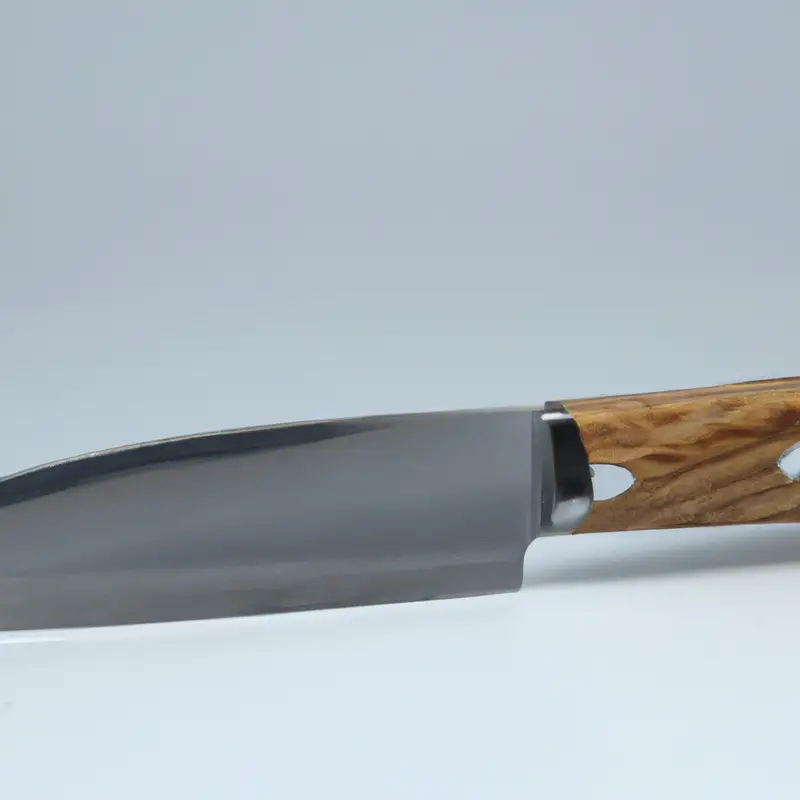
Recognizing the quality of the steel used in forged chef knives
The quality of steel used in forging chef knives is crucial for their performance, durability, and sharpness. Look for knives made from high-carbon stainless steel, which strikes a balance between sharpness and stain resistance.
Avoid knives made from low-quality stainless steel or lesser grades of carbon steel that can easily rust, dull, or chip.
Check the knife’s Rockwell hardness rating, as higher ratings indicate harder and more durable steel. Also, look for steel with a visible and consistent grain structure as it indicates better quality.
A forged chef knife made of high-quality steel will maintain its sharpness for longer, be less prone to wear and tear and will ultimately provide better results in the kitchen.
Checking the welds on a forged chef knife
To check the welds on a forged chef knife, look at the area where the blade meets the handle. The weld should be smooth, even, and free from any imperfections such as cracks or gaps.
A poorly made weld can affect the balance and strength of the knife, which can lead to difficulties in slicing and dicing.
To inspect the welds, run your finger along the junction between the blade and handle. Any roughness or bumps are indications of poor workmanship.
Additionally, a weld that is excessively thick can cause the knife to feel unbalanced and heavy, while a weld that is too thin can lead to the blade becoming loose and wobbly during use.
It’s crucial always to examine the welds before purchasing a forged chef knife. A well-made, solid weld will ensure that the blade and handle are firmly attached, which is critical for safe and efficient food preparation.
How to spot a counterfeit chef knife from a reputable brand
To spot a counterfeit chef knife from a reputable brand, you need to be observant and pay close attention to details. Here are some things to look out for:
- Packaging: Authentic chef knives from reputable brands usually come in high-quality packaging with the brand’s logo and product details clearly written. Counterfeit knives often come in poorly made or generic packaging.
- Price: If the price of a chef knife from a reputable brand is significantly lower than the usual price, it could be a red flag. Counterfeiters often sell their products at a lower price to attract buyers.
- Logo and Branding: Check the spelling and placement of the brand’s logo. Counterfeiters often misspell the brand’s name or use a different font and logo placement.
- Quality and Materials: Reputable brands often use high-quality materials to make their chef knives. The handle should be made of sturdy materials like wood, steel, or plastic. The blade should be sharp, durable, and have a consistent finish.
- Warranty and Customer Support: Reputable brands offer warranties and excellent customer support. Counterfeiters usually do not have such policies in place.
By being observant and following these guidelines, you can spot a counterfeit chef knife from a reputable brand and avoid being scammed.
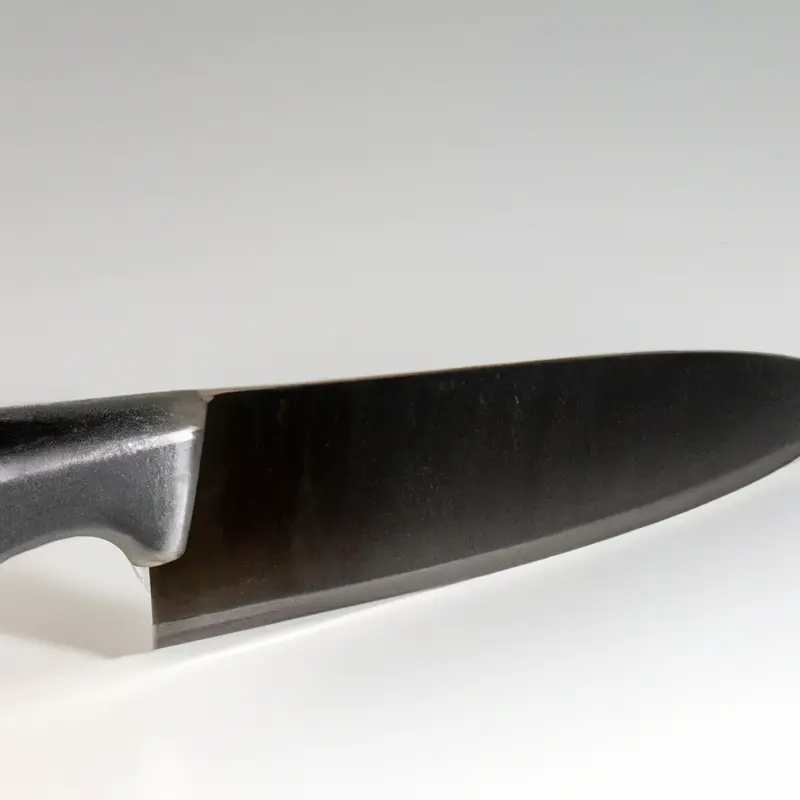
Final Verdict
Identifying a forged chef knife is crucial for ensuring the quality, durability, and safety of your kitchen tools. By understanding the basic differences between forged and stamped knives, checking the weight and balance, inspecting the handle and blade, evaluating the steel quality and welds, and recognizing signs of counterfeiting, you can make informed decisions when purchasing a chef knife.
More importantly, you can avoid poor craftsmanship, counterfeit products, and potential injuries in your kitchen.
As a trusted authority on culinary tools and techniques, we urge you to invest time and effort in selecting the right chef knife, and to always prioritize quality, reliability, and authenticity. Remember, a well-crafted chef knife is not just a tool, but an extension of your creativity, passion, and expertise.

